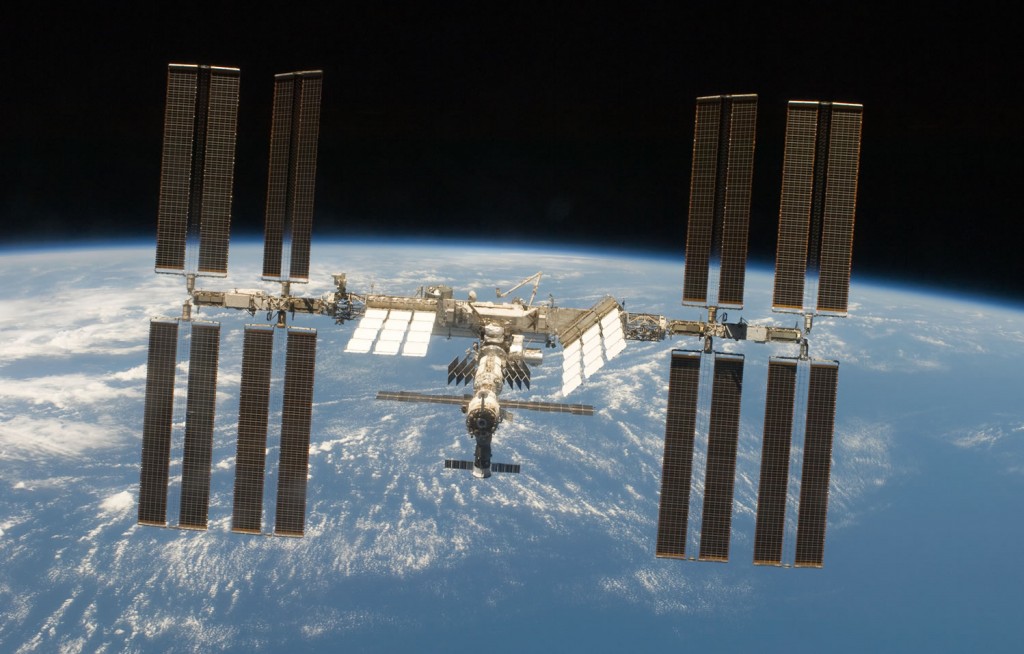
Image Courtesy of NASA
Recent advances in research and therapeutics are creating exciting possibilities: the ability to grow new organs for transplant; the potential to reverse autism through behavior therapy; or even the once inconceivable—the editing of the human genome to treat diseases caused by a genetic mutation.
Yet many medical mysteries remain. Where else might we turn for answers?
Look up. Way up. Orbiting 220 miles above the surface of the Earth is the International Space Station (ISS), placed into orbit in 1998. It is one of the world’s most technologically sophisticated vehicles and it may shed light on vexing medical challenges, including the causes of dementia and the key to increasingly effective drugs.
Space is often called “the final frontier”; astronauts from around the globe are aboard the ISS right now studying the effects of being subjected to a confined environment for months on end, a key to prolonged space travel that may help humans reach Mars—and along the way could improve human health.
In 2011, NASA chose the Center for the Advancement of Science in Space (CASIS) to be the sole manager of the national lab. CASIS was founded to use this zero-gravity platform to perform innovative research for the benefit of all humankind.
In December 2012, I was selected to be one of the seven members of the board of directors of CASIS. We have been working to develop the vision and mission for the national lab aboard the ISS. To fulfill our mission, we are reaching out to extremely talented scientists in all realms of research, including medicine, to identify the innovations likely to turn that science into practical applications for us on Earth.
Much like Lawrence Livermore, Brookhaven, Sandia and other national labs, the ISS lab is designed to do cutting-edge research, with particular focus on engineering, the biomedical sciences and other areas of basic and applied research. What the ISS uniquely provides is a fascinating scientific environment where there is an absence of gravity; the lab travels at 17,500 miles per hour and sees a sunrise every 90 minutes.
In the future, working in this rapidly moving environment may prove useful for the study of protein folding, which could help treat Alzheimer’s disease or diabetes; it may illuminate crystallography to help create new drug designs that can fight infectious diseases and slow or reverse osteoporosis.
Since the retirement of the Space Shuttle program on July 21, 2011, the United States must now launch supplies to the station through private organizations such as Space X. So, in addition to deciding which research to focus on, CASIS will examine how best to work with private industry to determine how to carry out these experiments.
This will not be the first time that space travel had benefitted those of us on terra firma. In the past 50 years, aerospace research has provided practical applications to the practice of medicine. Here are a few examples of NASA research already in regular use at hospitals and doctors’ offices globally:
- Telemetry (the wireless monitoring of patient data, such as heart rate and rhythms) is used in practically every hospital, even in most developing nations, and allows patients to remain mobile while medical personnel keep an eye on their condition.
- Our understanding of motion sickness through visual-vestibular interactions is directly related to research in preparation for the Space Shuttle program in the 1980s.
- Bone metabolism has been studied at length by researchers examining the effects of exposure to long-duration flights, including experiments on Skylab in the 1970s.
Humanity has come a long way since Alan Shepard’s 15-minute Mercury 7 suborbital flight in 1961, but we still need many answers about medicine and physiology if we are to venture forth beyond our “local” galactic neighborhood.
It is a mission well worth pursuing. After all, it is only those who dream of the unbelievable who have a chance of achieving the impossible.
A generation ago we could never have conceived of a world connected by social networking or regularly using the word “Twitter.” A generation from now we may apply Newton’s Universal Law of Gravitation in different ways and find answers to perplexing engineering and biomedical problems that once were viewed as unsolvable, and it will be thanks to our nation’s lab in the sky.
What research do you want to see ISS astronauts take on? Leave us a comment.
Want to see the ISS? If you’re fortunate and are at the right place at the precise moment you can glimpse its bright light zooming across the nighttime sky—more than 30 times faster than most commercial aircraft!

